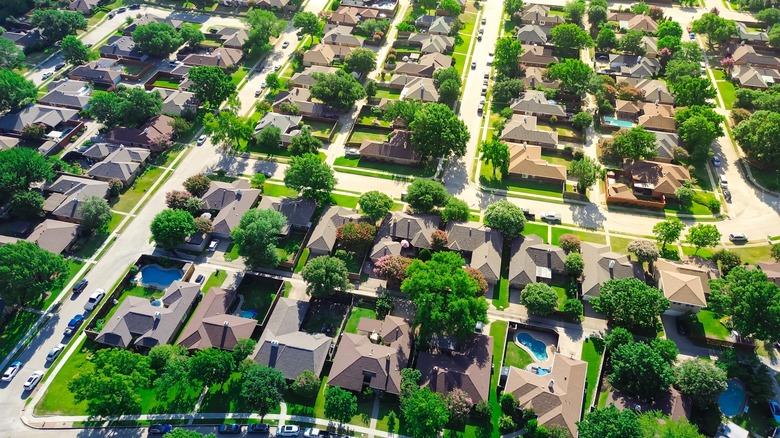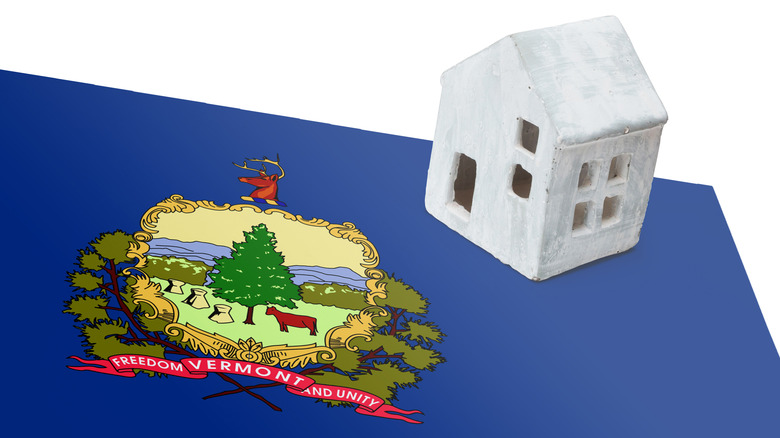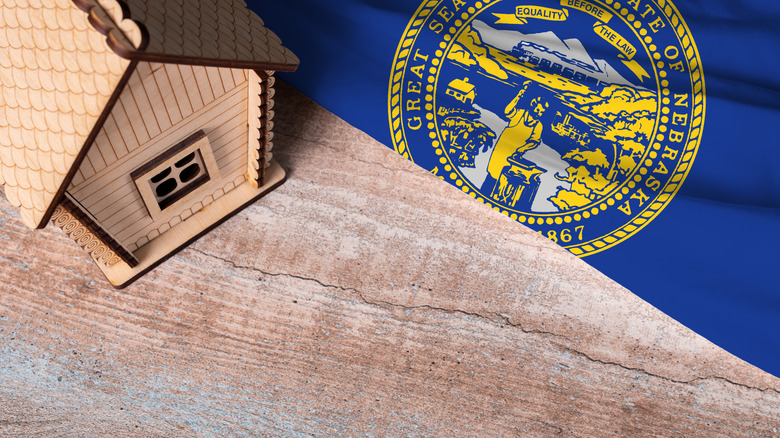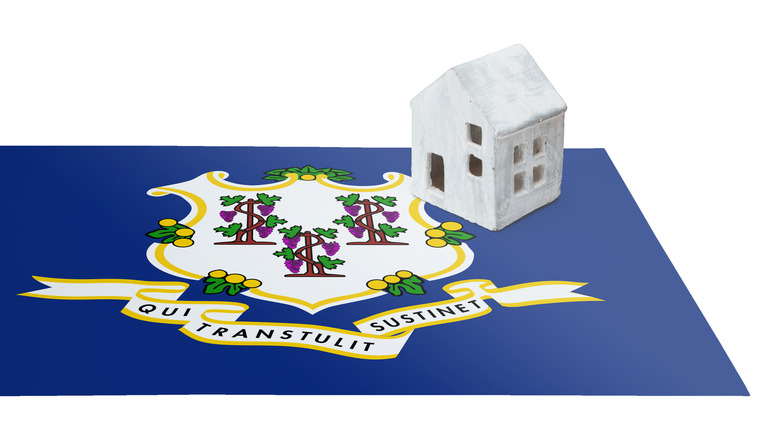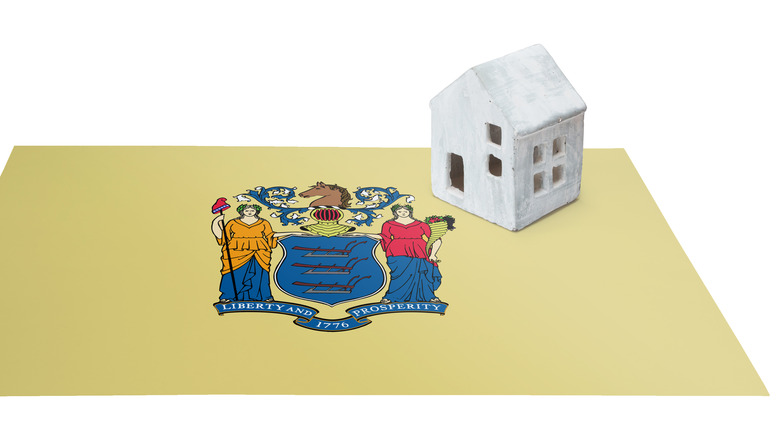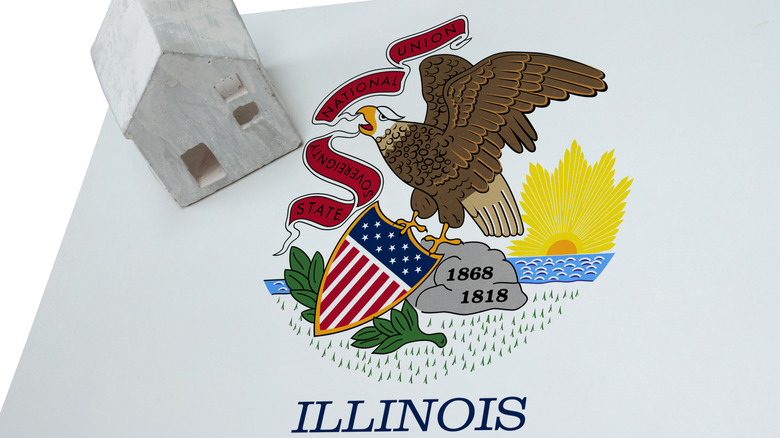10 States With The Absolute Highest Property Taxes
Property taxes are one of the largest ongoing costs of owning a home in the United States. In 2022, they made up 27% of all state and local tax collections nationwide, according to the Tax Foundation. That was more than any other type of tax and accounted for over 70% of all local tax revenue. Unlike income or sales taxes, which are often collected at the state level, property taxes are almost always set and collected locally. Counties, cities, and school districts rely on them to fund essential services such as public schools, police and fire departments, emergency medical services, road repairs, libraries, and parks. In short, although property taxes add to the costs of owning property, they help keep communities running.
Because property taxes are determined locally, they can vary widely not only from state to state but also from one county to the next. A homeowner in one county may pay thousands more each year than someone with a similar house just a few miles away. The amount owed depends on two main factors: the value of the property and the local tax rate. Once the assessed value is set, the local government applies a tax rate, often called a mill rate. A mill equals $1 in tax for every $1,000 of assessed value. For example, if a home is assessed at $200,000 and the local rate is 20 mills, the property tax bill would be $4,000. The sections that follows examines the states with the highest property taxes by calculating the median property tax bill divided by the median home value, with data taken from the Tax Foundation unless otherwise noted. This shows the effective rate that homeowners pay in each state, along with the counties with the highest and lowest bills.
10. Wisconsin — 1.25%
Wisconsin ranks tenth among the states with the highest property taxes, with an effective property tax rate of 1.25 percent. According to the Tax Foundation, the median home value in Wisconsin is $170,800, translating into a median annual property tax bill of about $2,135. With a 2024 median household income of $79,690, property taxes make up about 2.6 percent of income, ranking Wisconsin #11 nationally by property taxes as a share of income.
The exact property tax levied depends on the Wisconsin county where the property is located. Dane County collects the highest property tax amount in Wisconsin, levying an average of $6,276 (1.71% of the median home value) annually. Iron County has the lowest property tax in the state, collecting an average tax of $1,777.00 (1.79% of median home value) per year. The highest effective property tax rate is in Menominee County at 3.64% ($3,527), and the lowest is in Vilas County at 0.80% ($2,166).
Wisconsin has high property taxes due to local governments' significant reliance on property taxes for funding services, limited non-property tax revenue options, and the widespread use of referenda by school districts to increase funding. In addition, Wisconsin's constitution includes a uniformity clause that requires all types of property within a community to be taxed at the same rate, with exceptions for certain classifications like agricultural land, undeveloped land, forests, and minerals. This clause ensures that properties in Wisconsin are assessed and taxed uniformly.
9. New York — 1.26%
New York ranks ninth with an effective property tax rate of 1.26%. The median home value is $340,600, leading to a median annual property tax bill of about $4,291. With a 2024 median household income of $86,830, property taxes consume 4.9% of income, ranking New York #4 nationally.
At the county level, the six counties with the highest property tax bills are Putnam County, Suffolk County, Rockland County, Westchester County, Nassau County, and New York County, each exceeding $10,001 annually. These six are among the 16 counties with the highest median property tax payments in the country. All 16, except Falls Church and Marin County, are near New York City, with the rest in New Jersey. Hamilton County has the lowest at $2,369. By effective rate, Orleans County tops the state at 3.00%, while Kings County is lowest at 0.69%.
Several factors drive New York's high property taxes. First, the state has some of the highest home values in the country, especially in the New York City suburbs. Second, local governments and school districts rely heavily on property taxes to fund education, infrastructure, and services. In suburban counties like Westchester and Nassau, strong demand for high‑quality schools and public services pushes rates and bills even higher. Meanwhile, rural counties with lower home values still face relatively high effective rates, though the dollar amounts are smaller.
8. Ohio — 1.31%
Ohio ranks eighth with an effective property tax rate of 1.31%. The median home value is $163,100, producing a median annual property tax bill of about $2,138. With a 2024 median household income of $80,520, property taxes equal 2.7% of income, ranking Ohio 12th nationally by property taxes as a share of income.
Delaware County has the highest property tax bills at $6,896, while Meigs County has the lowest at $1,117. By effective rate, Cuyahoga County (Cleveland) is the highest at 2.08%, while Noble County is the lowest at 0.79%.
Ohio has high property taxes primarily because home valuations have risen 70% over the last five years, driven by high inflation and the post-pandemic housing boom. In Butler County, total property tax collections increased by 9.5% over just two years. For many families, the increase was even larger because about half the county is in school districts locked at the 20‑mill floor. In one Middletown district, the state‑required 2023 property value update led to tax bills rising by 34%. In addition, property taxes are the primary funding source for local services such as schools and emergency services, accounting for 65% of their revenue, of which 60% is allocated to school funding.
7. Texas — 1.36%
Texas ranks seventh with an effective property tax rate of 1.36%. The median home value is $125,800, resulting in a median annual property tax bill of about $1,711. With a 2024 median household income of $81,490, property taxes equal 2.1% of income, ranking Texas 14th nationally.
Travis County, home to Austin, has the highest property tax bills at $7,487, while Crockett County has the lowest at $466. By effective rate, El Paso County is highest at 2.09%, while Crockett County is lowest at about 0.33%. Texas has no state income tax, so local governments rely heavily on property taxes to fund schools, police, fire departments, and infrastructure. In other states, like California, properties are assessed only at the time of purchase or once every three to five years. However, Texas requires that properties be assessed every year based on current market data. When a property's market value increases, the appraised value and consequently the amount of property tax will also rise. As housing prices in cities like Austin, Dallas, and Houston have risen sharply, property tax bills have climbed as well. For many families, the increase in home values has doubled or tripled their tax bills over the past decade. This can make it difficult for retirees on fixed incomes to continue paying skyrocketing property taxes.
6. New Hampshire — 1.41%
New Hampshire ranks sixth with an effective property tax rate of 1.41%. The median home value is $249,700, producing a median annual property tax bill of about $3,523. With a 2024 median household income of $111,800, property taxes equal 3.15% of income, ranking New Hampshire 6th nationally.
Rockingham County has the highest property tax bills at $7,512, while Coos County has the lowest at $3,511. By effective rate, Sullivan County is highest at 2.38%, while Carroll County is lowest at 1.06%. New Hampshire's property taxes are high because the state does not levy a general income tax or a statewide sales tax. That means local governments must rely heavily on property taxes to fund schools, police, fire departments, and other essential services. This system shifts the tax burden directly onto homeowners. Like housing markets in other states, housing prices in the state have soared in recent years, boosting the amount property owners have to pay in property taxes.
5. Vermont — 1.42%
Vermont ranks fifth with an effective property tax rate of 1.42%. The median home value is $216,300, leading to a median annual property tax bill of about $3,073. With a 2024 median household income of $85,260, property taxes equal 3.6% of income. Chittenden County has the highest property tax bills at $6,527, while Essex County has the lowest at $2,828. By effective rate, Windsor County is the highest at 1.98%, while Grand Isle County is the lowest at 1.36%.
Vermont's property taxes are high because the state relies on them heavily to fund its schools. In 2024, Vermont property taxes increased by an average of 14% primarily due to rising school budgets and a statewide education funding formula that links property values to the amount of tax collected. Vermonters faced the double-digit property tax increase to meet budgets passed by school districts across the state. About two-thirds of Vermont's Education Fund for K-12 schools comes from State property taxes collected from property owners. The state's per-pupil K-12 education spending ranks among the top five in the nation. In addition, there is a shortage of housing, which dramatically increases property taxes.
4. Nebraska — 1.43%
Nebraska ranks fourth with an effective property tax rate of 1.43%. The median home value is $123,300, producing a median annual property tax bill of about $1,762. With a 2024 median household income of $86,140, property taxes equal 2.05 percent of income. Sarpy County has the highest property tax bills at $5,157, while Grant County has the lowest at $853. By effective rate, Sarpy County is the highest at 1.79%, while Hooker County is the lowest at 0.75%.
Nebraska's high property taxes are driven by a heavy reliance on property taxes to fund schools and local governments, limited state aid, and relatively low alternative revenue sources. The state is prohibited from levying property taxes, so revenue is collected entirely at the local level. These local taxes fund city and county operations, including law enforcement, fire departments, roads, and parks. Nebraska's population has not kept pace with growth rates, resulting in high property taxes.
3. Connecticut — 1.48%
Connecticut ranks third with an effective property tax rate of 1.48%. The median home value is $291,200, producing a median annual property tax bill of about $4,310. With a 2024 median household income of $99,240, property taxes equal 4.34% of income. Among planning regions, Western Connecticut has the highest property tax bills at $9,222, while Northeastern Connecticut has the lowest at $4,340. By effective rate, Greater Bridgeport is the highest at 2.15%, while Western CT is the lowest at 1.47%.
Connecticut's high property taxes result from high home values, school funding, and limited state revenue sharing. In Connecticut, according to the Yankee Institute, roughly 57% of property taxes fund education, and funding local public schools is the most significant cost for most cities and towns. Towns and cities are responsible for funding local services, such as police and fire departments, and roads. The state's higher-than-average cost of living also translates into higher costs for government services. For many local governments, property taxes are one of the few dependable ways to raise the money needed for everyday services.
2. New Jersey — 1.77%
New Jersey ranks second with an effective property tax rate of 1.77%. The median home value is $348,300, producing a median annual property tax bill of about $6,579. With a 2024 median household income of $103,500, property taxes equal 6.36% of income, ranking New Jersey #1 nationally. Several counties, Passaic County, Union County, Essex County, Hunterdon County, Somerset County, Morris County, Monmouth County, and Bergen County, have the highest property taxes in the country. Property tax bills are over $10,001 annually. The lowest is Cumberland County at $5,048. By effective rate, Camden County is highest at 3.08%, while Cape May County is lowest at 1.32%.
New Jersey is one of the most densely populated states in the country, and supporting so many residents makes it costly to fund schools, police, and infrastructure. The state's system of government adds to the challenge, with hundreds of municipalities and more than 600 school districts creating overlap, administrative redundancies, and higher expenses. Public schools in particular rely heavily on property taxes, unlike many other states that lean more on sales or income taxes, and the state's large student population requires high levels of funding. At the same time, New Jersey's government employees receive some of the strongest wages and benefits in the public sector, and the state must also cover significant pension and retiree healthcare obligations. With sales and income taxes kept at moderate levels, property taxes remain the primary reliable source of revenue.
1. Illinois — 1.83%
Illinois tops the list with the nation's highest effective property tax rate. Homeowners here pay, on average, 1.83% of their home's value each year in property taxes. The median home value in Illinois is $202,200, which translates into a median annual property tax bill of about $3,700. With a 2024 median household income of $84,210, property taxes consume roughly 4.40% of income, ranking Illinois second nationally when measured as a share of income.
Property taxes vary widely by county. Lake County, in the Chicago metro area, has the highest property tax bills in the state, averaging $8,743 annually (2.68% of median home value). At the other end of the spectrum, Pulaski County, in southern Illinois, has the lowest property tax bills at just $632 annually (0.82% of median home value). By effective rate, Lake County also tops the list, while Pulaski sits at the bottom.
Illinois has some of the highest property taxes in the nation largely because of the state's unusually large and fragmented system of local governments, combined with rising pension and debt costs. According to the Illinois Policy Institute, Illinois has nearly 7,000 units of local government, more than any other state, creating overlapping jurisdictions and driving up administrative expenses. At the same time, local governments rely heavily on property taxes to fund schools and services, while also shouldering the burden of escalating public pension obligations and retiree healthcare costs. This combination of structural inefficiency, heavy reliance on property taxes, and mounting legacy costs has caused property tax bills to grow faster than household incomes, leaving many Illinois homeowners with an outsized and rising tax burden.
